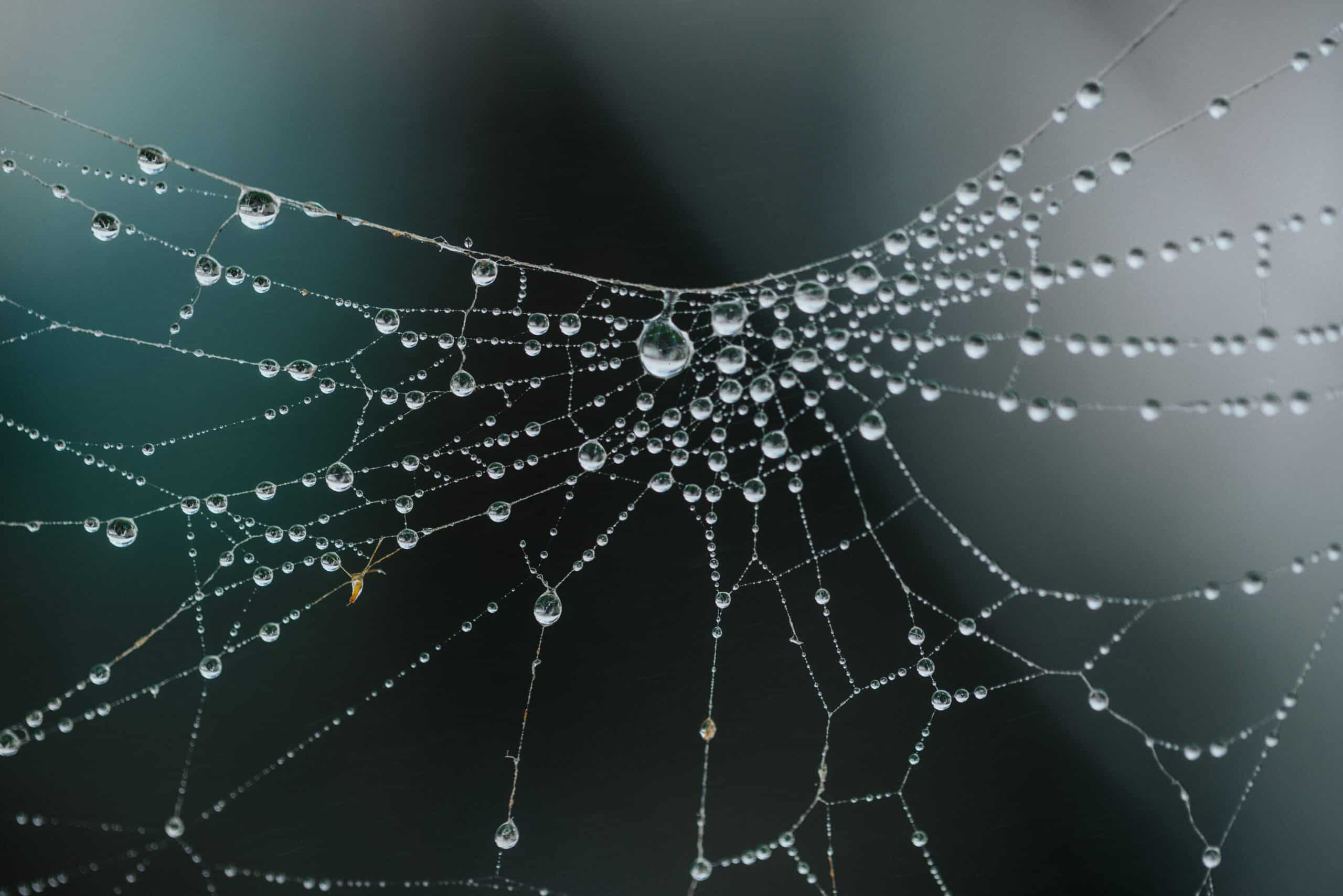The Spider Lily is a captivating flower, with its bright petals that twist and curl in a way that “weaves” a spell over those who behold it. Native to Japan, China, and Korea, this delicate beauty has been used in traditional medicine for centuries, but recently has become more widely appreciated for its striking beauty and ease of care. Whether you are an experienced gardener or just starting out, growing and caring for the Spider Lily can be a rewarding experience for anyone looking to bring some fresh life into their home.
In this article, we will cover everything from the basics of planting and watering your Spider Lilies to pruning and fertilizing them so they thrive in your garden year-round. From learning about their light needs to understanding how long they should bloom for, this guide will take you through every step of the process to ensure your flowers stay healthy and beautiful all season long.
So if you’re ready to add some majesty to your garden with these enchanting blooms, read on! We’ll walk you through everything you need to know about growing and caring for Spider Lilies so you can enjoy their beauty year after year.
What Is A Spider Lily?
A spider lily, also known as Lycoris radiata, is a gorgeous flower that adds a stunning touch to any garden. It’s not-so-difficult to grow and care for, so no matter what your gardening level of expertise may be, you can create a beautiful flower bed of them. Ah, if only they could keep blooming all year round!
The spider lily is an unusual bloomer in that it appears before the foliage appears. Its bright pink petals look like spider legs, hence its name. When the foliage does appear, it’s grass-like and stands tall at up to three feet with the flowers sitting atop the stems. The bulbs must be planted in late summer or early fall and will bloom in August or September with yellowish-green leaves emerging after flowering has finished.
To ensure success when growing and caring for the spider lily, make sure to plant them in well-draining soil that is slightly acidic (pH 6.0 – 6.5) and provide plenty of sun each day. Watering should be done weekly during the summer months and fall off some during winter but never allow them to dry out completely as this can damage the bulbs. Fertilizing once every couple of months will help promote strong growth and abundant blooms year after year.
Where Does The Spider Lily Grow Best?
A Spider Lily is a beautiful flower that can truly be a sight to behold – its delicate petals, breathtakingly intricate patterns and vibrant colours are enough to make anyone’s heart skip a beat! But where does this incredible bloom thrive best?
The answer may surprise you – the Spider Lily actually prefers hot climates with plenty of sun and well-draining soil. It thrives in USDA Zones 6-9, which is why you’ll often find it growing in gardens across the Southern United States. Additionally, it requires regular watering throughout the summer months to ensure that its needs are met.
It’s also important to note that Spider Lilies are not frost tolerant, so if you live in an area with colder temperatures, you’ll want to provide some protection for your flowers during the winter months. If you’re looking for a low-maintenance flower that will add interest and beauty to your garden with minimal effort, then consider planting a few Spider Lilies – they’ll certainly make an impact!
How To Plant Spider Lilies
When it comes to the beautiful and unique spider lilies, many gardeners are eager to learn how they can successfully add them to their garden. Growing and caring for these plants is not as difficult as it may seem. With just a few simple steps, even beginner gardeners can have success with these eye-catching blossoms. So what does it take to get your spider lilies into the ground?
The first step is to find a suitable spot in your garden where your spider lilies will thrive. Planting them in an area that receives full sun or partial shade and has well-drained soil is ideal. Once you’ve selected the perfect spot, you’re ready for the next step – planting your spider lilies!
When planting spider lilies, dig a hole two times larger than the bulb itself and place the bulb at least 4 inches below the surface of the soil. Be sure to fill in around the bulb with soil so that it’s completely covered. Water thoroughly after planting and continue to water regularly throughout its growing season. Spider lilies are relatively low maintenance but providing adequate water is key for success!
With proper care, your spider lilies will soon be blooming in no time! Now that you know how to plant them, understanding what type of soil requirements are needed for optimal growth is essential. Keep reading for more information about how to ensure your spider lilies reach their full potential!
Soil Requirements For Spider Lilies
When it comes to growing delicious and beautiful spider lilies, there are many factors to consider – one of which is the soil requirements. Soil plays a critical role in the health of your lilies and their ability to thrive, so it’s important to get it just right. But what exactly do these delicate flowers need from the soil?
The ideal pH for spider lilies is slightly acidic, ranging between 5.5 and 6.5. They also prefer a moist, well-draining soil with plenty of organic matter incorporated into it. If your soil lacks necessary nutrients or isn’t draining properly, you can mix in compost or peat moss to improve its texture and quality. Additionally, adding some sand may be beneficial for heavy soils that don’t drain easily.
These gorgeous plants will reward you with incredible blooms if you get their soil just right! With proper care and attention to detail, you can create an environment where your spider lilies not only survive but thrive! All that’s left now is to make sure they also receive enough sunlight… …and the right amount of water to keep the soil moist but not soggy.
Sun Requirements For Spider Lilies
It’s like a beautiful tapestry – nature’s own way of crafting the perfect environment for growing spider lilies. Sunlight is one of the most important components in this web-like masterpiece, as it helps create an atmosphere that will allow these beautiful flowers to bloom. Here are 4 key points that you should keep in mind about the sun requirements for spider lilies:
- Spider lilies need full sun or partial shade in order to thrive.
- They should be exposed to direct light for at least four hours per day.
- If grown indoors, spider lilies should be placed near a sunny window and rotated periodically so they get even exposure on all sides.
- Too much direct sunlight can cause the leaves to dry up and burn, so take care to protect them from too much heat and UV rays during the hottest part of the day if grown outdoors.
The amount of sunlight needed by spider lilies is just one factor in creating a hospitable environment for them to flourish; water requirements must also be taken into consideration if you want your plant to reach its full potential – but more on that later…
Water Requirements For Spider Lilies
A spider lily is like a beacon of hope, eternally blooming in the midst of life’s uncertainty. Caring for these remarkable flowers requires a few key steps. Here, we’ll explore the water requirements for this captivating plant.
For starters, spider lilies should be watered once every week or two during their growth season. To ensure the best possible hydration, use room-temperature water and avoid soaking the soil to prevent root rot. Here are five more essential tips you should know:
• Water at ground level, to avoid wetting the foliage and risking fungal diseases. • If temperatures remain high, increase watering frequency to once per week. • Always check the soil before watering; if it is still moist, wait until it dries out before adding more moisture. • Avoid over-watering; this can lead to root rot and other issues with your spider lily’s health. • During winter months, decrease watering frequency to once every one or two months.
These guidelines will help keep your spider lilies in tip-top shape year-round! With proper care and attention, these lush blooms will provide a stunning display for any garden setting. Now that you know about their water requirements, let’s explore how to fertilize them for even brighter blooms!
Fertilizing Spider Lilies
The spider lily, with its bright colors and unique shape, is an inviting sight for any garden. It’s no surprise that many gardeners are eager to add these beautiful blooms to their landscape. Fertilizing spider lilies is essential for proper growth and health. While it may seem like a complex task, it doesn’t have to be if you have the right tips and tricks!
Fertilizing spider lilies is easy when done correctly. Start by using a water-soluble fertilizer mixed with water according to the package instructions. Apply the solution every two weeks during the growing season and once or twice per month during the dormant season. Make sure not to over-fertilize as this can cause damage to the plant. Additionally, make sure that the fertilizer contains all of the necessary nutrients such as nitrogen, potassium, phosphorus, and other micronutrients.
Organic fertilizers such as compost tea or manure can also be used in place of synthetic fertilizers. These organic options are often more beneficial because they help build up soil fertility and contain valuable micronutrients that synthetic fertilizers do not contain. Use these organic fertilizers in moderation and make sure to keep them away from the base of the plant where they can cause root rot.
With these tips in mind, you should now have all the knowledge you need to properly fertilize your spider lilies for years of beauty and enjoyment! To ensure your plants stay healthy and vibrant, remember to space and group them properly so each one has room to thrive.
Spacing And Grouping Spider Lilies
Spacing and grouping spider lilies can be an exciting part of your garden design. Whether you’re a seasoned gardener or a beginner, there are some simple steps to make sure your spider lilies look their best. Here are a few tips on adding these exotic flowers to your garden:
Give each plant enough breathing room. Generally, single plants should have at least one foot of space in the ground between them.
For groupings, it’s best to allow for two feet of space between each individual plant or clump.
When planting in rows, stagger the groupings rather than forming straight lines; this will create an interesting visual effect while still giving them plenty of room to grow.
Once you’ve got your spider lily arrangements all set up, sit back and enjoy watching their beauty unfurl! As with any flower, though, there can be issues crop up from time to time – so it’s important to keep an eye out for any common problems that may arise.
Common Problems With Spider Lilies
Ah, the spider lily! A delicate flower that’s as intricate as it is beautiful. And yet, despite its alluring nature, it can be a bit of a challenge to grow and care for. So let’s take a look at common problems with spider lilies and how to avoid them.
Firstly, spider lilies aren’t too big on water. They prefer dry soil and will suffer if kept too moist. Secondly, they don’t like full sun – or even too much shade for that matter – so you’ll want to keep them in an area with light dappled shade. Lastly, overcrowding can be an issue with these plants as well; when planting them, give each one enough space to spread out and thrive.
These issues can be easily avoided by following some simple guidelines: make sure the soil is well-drained, provide light dappled shade, and allow adequate spacing for each plant. If you do this correctly your spider lily should remain healthy and happy!
How To Propagate Spider Lilies
Like a web stretching to infinity, the spider lily’s beauty is captivating. It’s a perfect specimen for propagating and spreading its lush, trumpet-shaped blooms. Let’s explore how to give this showstopper the care it needs to keep growing.
First, let’s look at the basics of propagation. If you’re lucky enough to have an established clump of spider lilies in your garden, then dividing them is the easiest way to propagate these plants. The best time to divide them is during their dormant season from late summer to early fall. Gently dig up the bulbs and divide them into smaller pieces with each piece having multiple buds on them. Then replant them in prepared soil about six inches deep and water thoroughly after planting your new spider lily divisions.
If you don’t have access to an existing clump of spider lilies, or if you’d like a more controlled method of propagation, then try collecting the seeds that form when they are spent blooms in late summer or early fall. Simply snip off the seed capsules once they have dried out and shake out the seeds into an envelope or container until ready for planting in springtime. To increase your chances of success, start your seeds indoors so they will be better protected from extreme cold temperatures outdoors. When starting indoors, plant your seeds in shallow trays filled with moist potting mix and place them in bright light away from direct sunlight until sprouts appear at which point you can transplant them outdoors into prepared beds with well-draining soil and plenty of sun exposure for optimal growth and flowering potentials!
Propagating spider lilies is relatively easy once you understand the basics and provide adequate care for these beautiful flowering plants as they grow throughout their life cycle. So get ready for some dazzlingly intricate webs of color taking over your garden!
Deadheading Spider Lilies
Deadheading spider lilies is like pruning a bush – it’s a vital part of keeping them healthy and beautiful. It’s a process that requires attention, care and thoughtfulness, much like tending to an old friend. Much like the way we shape our relationships with people, deadheading spider lilies gives us the opportunity to shape and care for something beautiful.
Removing spent flowers from Spider Lilies can help promote further blooming and encourage lush foliage growth. It also helps keep plants looking neat and tidy by removing dead or dying flower stalks. To deadhead, simply snip off the faded blossoms at their base with scissors or garden shears just below where the petals meet the stem. This ensures that no foliage is removed in the process. Take your time when deadheading, as this task will determine how well your Spider Lilies bloom in subsequent seasons!
When done correctly, deadheading can help make sure that your Spider Lily plants keep producing showy flowers season after season. Caring for these unique flowers is not only rewarding but also provides an opportunity to pause and reflect on how we’re caring for ourselves too! With thoughtful attention to detail and careful tending, it’s possible to enjoy vibrant blooms year after year – an effort well worth putting in for sure. As we move into digging and dividing spider lilies, let’s remember that this task is about more than just gardening – it’s about taking time out of our lives to nurture something beautiful.
How To Dig And Divide Spider Lilies
Sprucing up a garden with the addition of spider lilies is an attractive way to create an eye-catching landscape. But these lilies require some special care in order to survive and thrive. As such, one of the most important steps in growing and caring for these plants is digging and dividing them.
Digging up and dividing spider lilies is an essential part of their growth cycle, as it helps keep them healthy and increases the number of plants you will have in your garden. When they are divided, they can be replanted in different areas so that they can spread out and grow better. To divide spider lilies, start by carefully digging around the base of the plant with a shovel or trowel. Carefully lift the entire root ball out of the ground, taking care not to break any roots or stems.
Once you have removed the plant from the soil, use a sharp knife to cut through the rootball into several sections. Make sure each section has at least one bud or leaf on it so that it can regenerate when planted again. Then replant each section in new locations around your garden bed for optimal growth. With regular division, you will be able to maintain a healthy population of spider lilies without too much effort!
Winter Care For Spider Lilies
As resilient as they may be, spider lilies still require a vigilant caretaker in order to bloom and thrive. In winter, the web of tasks for caring for these delicate flowers can appear daunting at first. But with the right guidance, even a novice gardener can weave together the perfect environment for their spider lilies.
To begin, it’s essential to provide some protection against frost during the winter months. Mulching around the plants is an effective way to ensure that they remain warm and snug throughout the chillier season. A blanket of mulch will also help prevent weeds from taking over your beds and stealing away nutrients from your precious spider lilies.
Next, careful watering is necessary to keep your spider lilies happy in winter without overwatering them. Aim to water them deeply and infrequently, as too much moisture can cause root rot or fungal disease. Keep an eye out for any signs of distress such as wilting leaves or stunted blooms so you can catch any problems early before they become more serious.
By following these simple steps and remaining mindful of their needs during wintertime, you can have healthy spider lilies come springtime that are ready to bring life and color back into your garden. Now let’s explore how we can tackle pests and diseases that might plague our beloved spider lilies…
Pests And Diseases Of Spider Lilies
Spider lilies are known for their striking, vibrant blooms that bring a cheerful atmosphere to any garden. But, in order to keep them healthy and thriving all year round, it’s important to watch out for certain pests and diseases that could affect them. Here are three things you should be aware of when caring for spider lilies:
Firstly, spider lilies are susceptible to fungal diseases, caused by the warm and humid climates they prefer. This can lead to root rot or crown rot, both of which can quickly damage your plants if left untreated. You may notice wilting or discolored leaves as early signs of infection. To combat this problem, make sure your soil is well-drained and only water the plants when necessary.
Secondly, spider lilies can be attacked by several types of aphids, small insects that feed on the sap of plants. They may leave behind a sticky residue known as honeydew that attracts other pests like ants and encourages mold growth on the leaves. To get rid of aphids, simply spray them with a hose or use an insecticidal soap solution.
Lastly, slugs and snails can often attack the foliage of spider lilies, causing brown marks or holes in the leaves. The best way to keep these slimy creatures away is to set up barriers around your plant beds using copper strips or sandpaper. You can also try sprinkling some diatomaceous earth around the base of your plants as an added deterrent.
By taking preventive measures against these common pests and diseases, you can ensure that your spider lilies remain healthy and beautiful throughout their growing season – allowing you to enjoy their stunning blooms in your garden for years to come!
Enjoying Spider Lilies In Your Garden
Enjoying the beauty of spider lilies in your garden is like witnessing a breathtaking natural spectacle. Each delicate bloom dances gracefully in the breeze, creating an enchanting sight that will take your breath away. With their unique and captivating appearance, these blooms are sure to bring a smile to anyone who sees them.
To get the most out of growing spider lilies, there are a few key tips you should follow. First, be sure to plant your lilies in an area that receives plenty of sunlight so they can thrive and reach their full potential. Additionally, it’s important to water them regularly as they need plenty of moisture to survive. You should also provide them with some fertilizer every month or two to keep them healthy and help them grow strong.
When caring for your spider lilies, it’s essential to know when it’s time to prune and divide the plants. Pruning helps keep the lilies from getting too big or overgrown and allows for more blooms year after year. Dividing the plants can also help promote more growth and healthier plants overall. Taking these steps will ensure that you get the most out of your spider lily garden for years to come!
Frequently Asked Questions
How Long Does It Take For A Spider Lily To Bloom?
Stunning spider lilies have a beauty that’s captivating. But how long does it take for these gorgeous flowers to bloom? It’s important to understand the blooming process of these plants in order to care for them correctly.
First, planting the bulb is paramount. Spider lilies can take up to two or three weeks to start appearing above ground after being planted. As the plant starts sprouting and growing, it can take an additional two months before any buds appear on the stems.
In most cases, you should expect your spider lily to begin blooming by late summer or early fall. These stunning flowers will last for several weeks before they eventually fade away until next season. Keeping spider lilies healthy is easy with minimal maintenance and proper watering during hot summer days.
By understanding their growth cycle, you can ensure that your spider lilies reach their full potential and provide a beautiful display of blossoms every year. With a few simple steps for care, you can enjoy these majestic blooms for years to come!
What Type Of Climate Is Best For Spider Lilies?
Growing spider lilies is not difficult, but there are some conditions that make them thrive. The type of climate spider lilies need for optimal growth is key to their success. Let’s explore the characteristics of this climate and what it means for gardeners.
Spider lilies prefer a warm and humid climate, with temperatures usually between 65-85 degrees Fahrenheit. They also prefer full sun or partial shade—they need bright light to bloom profusely throughout the growing season. The soil should be well-drained and amended with compost to ensure optimal drainage and fertility.
When the right conditions are met, these beautiful plants can be showstoppers in any garden or landscape. Spider lilies will reward you with months of vibrant blooms in shades of pink, orange, red and white depending on the variety you choose. Along with their beauty comes their ability to attract butterflies and other pollinators to your yard—a special bonus!
Create an environment that meets all these needs, and you’ll be rewarded with eye-catching flowers all summer long! You don’t have to be an expert gardener; just provide your spider lilies with what they need and they’ll do the rest. With proper care, these elegant flowers can bring plenty of joy for many years to come.
Do Spider Lilies Require A Lot Of Maintenance?
The spider lily is a unique and captivating flower, its delicate petals unfolding like the arms of an arachnid. Symbolically, it speaks to the beauty of nature, its power to surprise us with unexpected beauty. But when it comes to maintenance, do spider lilies require a lot?
The answer is yes and no – while they’re not difficult to care for, they do need some TLC. Like many flowers, spider lilies need plenty of sun and regular watering. To keep them looking their best throughout the growing season, you’ll also want to check for pests and diseases regularly.
But unlike other plants that may need constant pruning or training, spider lilies require very little in terms of maintenance – just normal garden care should be enough to keep them blooming each year. For those who don’t have much time for gardening but still want a beautiful flower in their yard, the spider lily can be a great choice.
When cared for properly by providing plenty of sunshine and regular waterings, your spider lilies will reward you with gorgeous blooms each year – making your garden even more vibrant and lovely!
How Often Should I Water Spider Lilies?
Watering spider lilies may seem like a daunting task, but with the right knowledge it can be a breeze. As with any plant, how often you need to water your spider lilies depends on several factors. Knowing how often to water your plants will ensure they stay healthy and blooming for years to come!
To start off, it’s important to know that spider lilies don’t require a lot of water—so don’t overdo it. However, during the summer months when temperatures are warmer, you should increase watering frequency slightly. It’s best to check the soil every 2-3 days before watering and only if it feels dry at least 1 inch below the surface. If your soil isn’t drying out quickly enough, try adding some compost or mulch around the base of your plants to help retain moisture.
On top of regular watering, spider lilies also benefit from occasional deep soaking sessions in order to encourage strong root growth and promote larger blooms. During these deeper soakings, make sure your plant is getting plenty of water until it starts running out of the drainage holes at the bottom of its pot. This ensures that all areas of soil are evenly moistened and that there are no pockets of dryness where roots could be deprived of much-needed moisture.
With a bit of extra attention and care, you can keep your spider lilies looking their best all season long! By understanding what they need and providing adequate amounts of water throughout the year, you’ll be rewarded with beautiful blooms that will brighten up any outdoor space.
Are Spider Lilies Toxic To Pets?
Are spider lilies toxic to pets? You might be surprised to find out that these beautiful, delicate blooms are actually very dangerous for cats and dogs. It’s important to be aware of the risks before you bring this plant into your home.
Like many other flowers, spider lilies contain oxalic acid which can cause irritation to the mouth and throat if ingested. In addition, they also contain toxic alkaloids that can be fatal to cats and dogs if eaten in large quantities. This makes it essential that pet owners keep these plants out of reach from their furry friends.
It’s not all bad news though – with some simple precautions you can still enjoy these gorgeous blooms without putting your beloved pet at risk. Make sure the spider lillies are kept in a safe place away from your pet’s reach, such as on a high shelf or behind a protective fence. Also, watch your pet closely while they are outside so they don’t take an unexpected nibble! With these steps in place, you can safely enjoy the beauty of spider lilies without any worries.
Conclusion
Spider Lilies are a beautiful and easy to care for flowering plant that can add beauty and life to any garden. With the proper environment, they will bloom with little maintenance or effort from the gardener. Although they may require some extra attention during their growing season, the reward of seeing these vibrant blooms is worth it.
The Spider Lily is a reminder of how beautiful nature can be and how much joy we can find in caring for something living. As we tend to this gorgeous flower, we must remember that all living things require attention and nourishment in order to thrive. Just like the Spider Lily needs water and sunlight to grow, so too do our relationships, families, and friendships need to be nurtured in order to flourish.
Allusion has been used throughout this article to emphasize the importance of nurturing relationships as well as plants. The Spider Lily is a symbol of life, growth, and beauty which should encourage us all to nurture the important things in our lives just as we would nurture a flower in our garden. With the right amount of care, both your garden and your relationships will blossom into beautiful works of art.





























